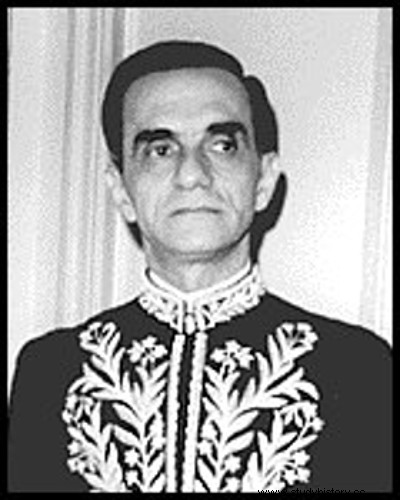
By Me. Cláudio Fernandes
Pernambucano João Cabral de Melo Neto (1920-1999) was among the main Portuguese-speaking poets of all times and among the most important in Brazil. His poetry, begun in 1942, began to be deeply marked, from the 1950s onwards, by the geographical, historical and, in general, cultural aspects of the region where he was born - the Brazilian Northeast . Some of his main poems are of great value to the student, teacher or scholar of history.
As a Pernambucan, the memories of the old sugar mills, the cane fields and the drought that periodically devastates the region were endless materials of his poetry. The images of the vegetation of the caatinga, the dry land and the sertanejo man — whether the migrant, portrayed in the famous theatrical poem Morte e Vida Severina, or the sugar cane worker — were part of João Cabral's compositions.
Another characteristic image of Cabral's poetry is that of stone, so some critics qualify his poetry as “mineral poetry” or economic poetry, clean of lyricism and “sentimental outpouring” . It is a poetry as hard as stone and as rough as the vegetation of the caatinga. From his poems, we were able to penetrate the landscapes of the Brazilian Northeast, its history and its “human types”. In the following excerpt there is an example of the image of the stone in one of his poems entitled Education through the stone :
Another education through stone:in the Sertão
(from the inside out, and pre-didactic).
In the Sertão, the stone does not know how to teach,
and if I did teach, I would teach nothing;
there you don't learn the stone:there the stone,
a birthstone, ingrains the soul.
(Melo Neto, João Cabral. Education through stone )

The dry land of the northeastern hinterland was one of the raw materials of João Cabral's poetic work
We were able to infer from the poem the atmosphere of living in the northeastern backlands, that is, the experience of suffering throughout the history of the Northeast, whose aridity “educates” man through “a education through stone”, as the title suggests. In another of his poems, there is an exploration of the type of speech of the sertanejo, seeking to scrutinize why the sertanejo speech also adjusts to the aridity of the region:
Speaking at the sertanejo level is deceiving:
his words come like candy
(words confectionery, pill), in the glace
with a smooth, sweet intonation.
While under it, it lasts and hardens
the stone kernel, the stony almond,
of this stony tree (the sertanejo)
incapable of not expressing itself in stone.
(Melo Neto, João Cabral. The sertanejo speaking )
The conception of the sertanejo man as a “stony tree” and “incapable of not expressing himself in stone” reveals an acute “historical psychology” that Cabral developed in his poems. The life story of the sertanejo always appears in images that make clear his condition of being that is transformed by the inhabited environment and, in turn, also seeks the transformation of the arid environment in which he was released.
Like João Cabral, many other Brazilian poets have an insightful interpretation of Brazilian history that could not be perceived otherwise than through poetic writing. In this sense, poetry allies itself to History in the endeavor to understand culture and other spheres of human activities.
* Image credits:Academia Brasileira de Letras
